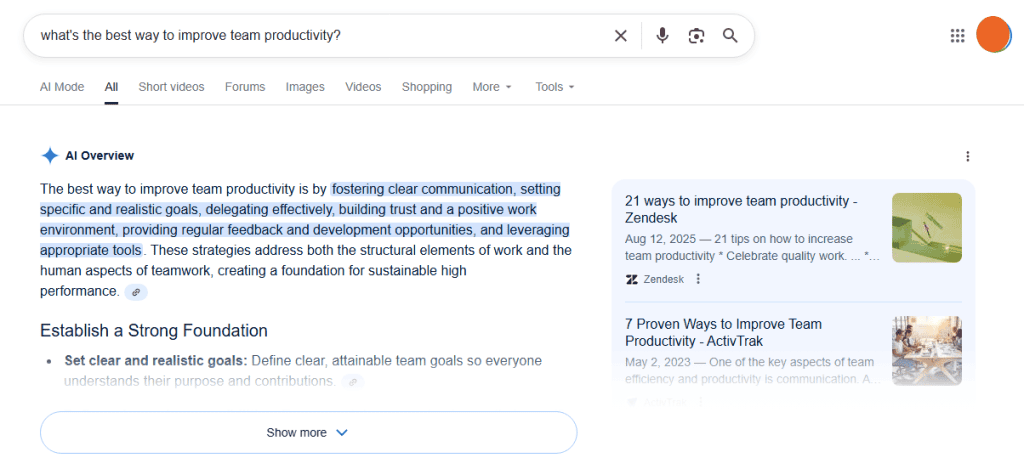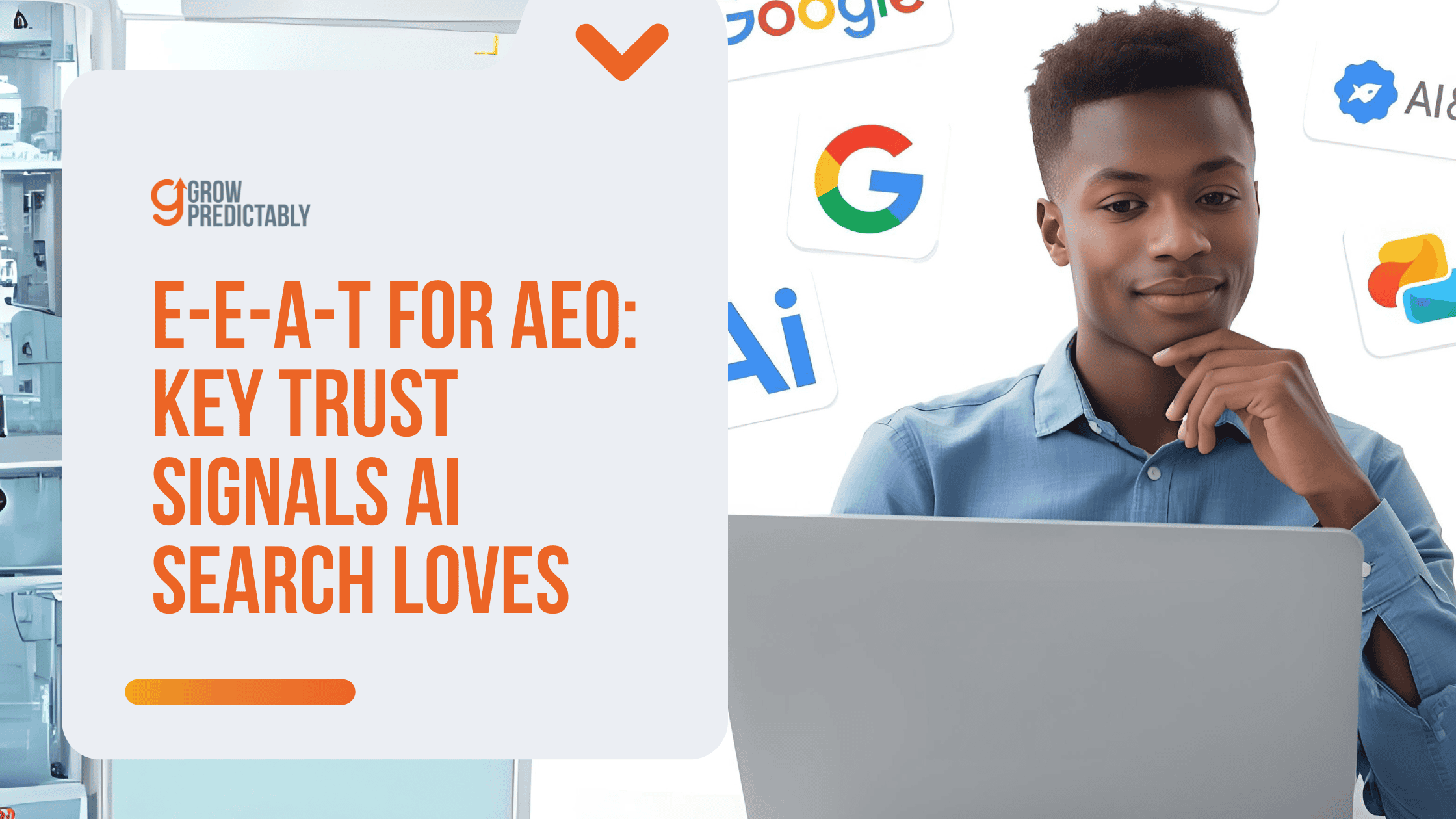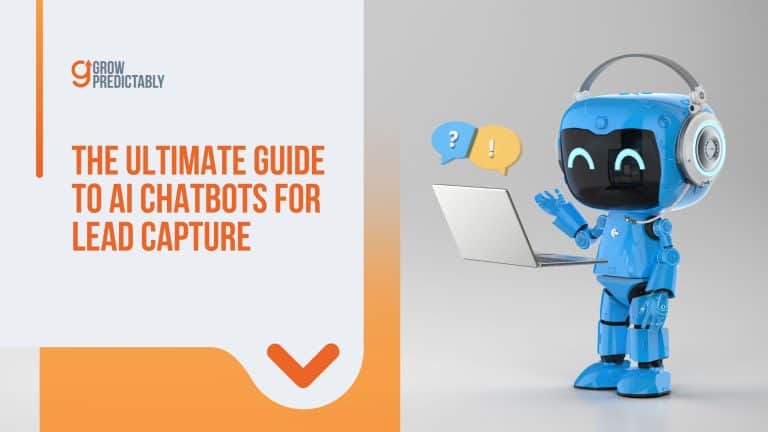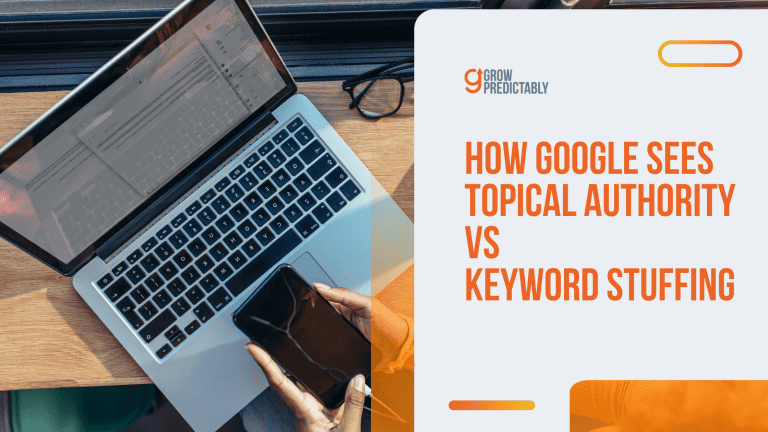E-E-A-T for AEO: Key Trust Signals AI Search Loves
What if your content could become the default source AI systems cite?
E-E-A-T for AEO creates the key trust signals AI search engines use to identify authoritative, reliable content worth referencing.
Ignore these signals, and you’ll watch competitors get featured in AI responses while your expertise remains invisible.
But master E-E-A-T principles, and you’ll see increased citations, higher authority, and consistent AI recommendations.
Curious which trust signals matter most for AI visibility right now?
Keep reading to discover what actually works in 2025.
TL;DR
Google’s E-E-A-T framework expands on SEO strategies by emphasizing Experience, Expertise, Authoritativeness, and Trustworthiness, crucial for AI’s Answer Engine Optimization (AEO). Implementing E-E-A-T ensures your content is top-trusted by AI, enhancing visibility and conversions.
KEY TAKEAWAYS
- Integrate personal anecdotes, case studies, and unique research findings to demonstrate genuine first-hand experience, which differentiates your content and builds immediate credibility.
- Keep your content accurate and up-to-date by regularly revisiting and refreshing data, citing multiple credible sources, and addressing industry debates to enhance expertise and authority perception.
- Actively engage with industry peers through collaborations, guest posts, and professional communities to establish authority, and ensure your online presence is consistent and recognizable for broader influence and trustworthiness.
What Is Google’s E-E-A-T Framework?
Google’s E-E-A-T stands for Experience, Expertise, Authoritativeness, and Trustworthiness—four interconnected pillars that Google’s quality raters use to evaluate content quality and rank content on SERPs.
This was originally introduced as E-A-T in 2014 and was later on updated to E-E-A-T in 2022. This framework has become the gold standard for content evaluation.

Experience represents first-hand knowledge and practical involvement with your topic. It’s the difference between writing about “10 Best Project Management Tools” after actually using them versus compiling a list from other articles.
Expertise demonstrates deep knowledge and skill in your subject matter, whether through formal credentials, extensive study, or proven track record in the field.
Authoritativeness reflects your recognition as a go-to source within your niche, measured by citations, mentions, and references from other credible sources.
Trustworthiness encompasses accuracy, transparency, and reliability—the foundation that makes readers and AI systems confident in recommending your content.
What Is Answer Engine Optimization (AEO)?
AEO focuses on positioning your content as the go-to source for AI responses, unlike traditional SEO, which aims at ranking in search results.
When AI platforms like ChatGPT are used for questions such as “what’s the best way to improve team productivity?” the AI platform favorably pull from reliable, comprehensive sources.
AEO’s goal is to ensure your content is chosen as that trusted source.

This reflects a shift in user behavior from browsing search results to relying on AI-generated summaries and direct answers.
Neil Patel simplified it best in one of his NP Digital resource.
This shift makes it crucial that your content isn’t just findable—it’s citable, quotable, and trustworthy enough for AI systems to feature prominently in their responses.
How Does E-E-A-T Help With Your AEO Efforts?
AI systems prioritize responses from the most reputable sources, focusing on reliability, accuracy, and authority—the core of E-E-A-T principles.
By implementing E-E-A-T, you elevate your content as premium source material, gaining consistent citations, mentions, and recommendations in AI search engines.
Traditional SEO focuses on gaming algorithms; AEO focuses on serving users.
As AI-generated content proliferates online, both users and systems increasingly favor sources that demonstrate true expertise and trustworthiness.
The Complete E-E-A-T Implementation Checklist for Answer Engine Optimization
According to Google Search Director and Search Engine Land founder Danny Sullivan, good SEO practices equal to good AEO/GEO practices.
And what better way to champion white hat SEO in 2025 than implementing E-E-A-T?
Here’s a master checklist of how you can demonstrate experience, expertise, authoritativeness, and trustworthiness in content.
Experience: Demonstrating First-Hand Knowledge
✅ Include Personal Anecdotes and Case Studies
- Share specific examples from your own work or observations
- Use phrases like “In my experience,” “When I implemented this strategy,” or “After working with 50+ clients”
- Include screenshots, photos, or documentation from your actual projects
✅ Provide Concrete Data and Results
- Reference specific metrics, percentages, or outcomes you’ve achieved
- Include before-and-after comparisons from your own projects
- Share lessons learned from failures, not just successes
✅ Use Detailed, Specific Language
- Replace generic advice with specific, actionable steps
- Include exact timeframes, costs, or measurements when relevant
- Describe the actual process, tools, and challenges you encountered
✅ Create Original Research and Experiments
- Conduct surveys or interviews within your industry
- Test strategies yourself and document the results
- Share unique insights that can only come from hands-on experience
✅ Reference Your Professional Journey
- Mention relevant roles, projects, or experiences that qualify your perspective
- Explain how your background shapes your approach to the topic
- Connect your experience directly to the advice you’re providing
Expertise: Showcasing Deep Knowledge
✅ Demonstrate Comprehensive Subject Mastery
- Cover topics from multiple angles and perspectives
- Address common misconceptions or debates within your field
- Explain the “why” behind recommendations, not just the “what”
✅ Use Industry-Specific Terminology Appropriately
- Include relevant technical terms while explaining them for broader audiences
- Reference industry standards, frameworks, or methodologies
- Cite current research, studies, or industry reports
✅ Create In-Depth, Well-Researched Content
- Aim for comprehensive coverage that goes beyond surface-level advice
- Include historical context or evolution of concepts when relevant
- Address edge cases and exceptions to general rules
✅ Maintain Content Accuracy and Currency
- Regularly update statistics, examples, and references
- Acknowledge when information has changed or evolved
- Include publication or last-updated dates on all content
✅ Cross-Reference and Validate Information
- Cite multiple credible sources for important claims
- Link to primary sources rather than secondary interpretations
- Acknowledge conflicting viewpoints or ongoing debates
Authoritativeness: Building Recognition and Citations
✅ Optimize Your Author Bio and About Page
- Include relevant credentials, certifications, or education
- Mention notable achievements, publications, or speaking engagements
- Provide clear contact information and social media links
✅ Secure Quality Backlinks and Mentions
- Guest post on reputable sites within your industry
- Participate in expert roundups or interviews
- Create linkable assets like original research or comprehensive guides
✅ Build Strategic Partnerships and Collaborations
- Co-create content with other recognized experts
- Participate in industry events, podcasts, or webinars
- Engage in professional communities and discussions
✅ Establish Consistent Brand Presence
- Maintain active, professional social media profiles
- Regularly publish on platforms where your audience gathers
- Develop a recognizable voice and perspective within your niche
✅ Generate Social Proof and Recognition
- Collect and display client testimonials or case study results
- Share media mentions, awards, or industry recognition
- Document speaking engagements or expert contributions
Trustworthiness: Ensuring Reliability and Transparency
✅ Implement Clear Transparency Measures
- Include detailed author information on every article
- Provide clear disclosure of any conflicts of interest or affiliations
- Explain your methodology for research or testing when applicable
✅ Ensure Technical Website Security
- Use HTTPS encryption on all pages
- Maintain fast loading speeds and mobile responsiveness
- Implement proper site structure and navigation
✅ Create Comprehensive Legal and Policy Pages
- Include detailed privacy policy and terms of service
- Provide clear contact information and customer service options
- Display relevant business credentials or certifications
✅ Maintain Editorial Standards and Fact-Checking
- Implement a content review process before publication
- Correct errors promptly and transparently when discovered
- Cite sources for all factual claims and statistics
✅ Build Long-Term Content Consistency
- Maintain regular publication schedule
- Ensure consistent quality across all content pieces
- Develop content series that demonstrate ongoing expertise
What Are The First Steps for AEO?
To kickstart answer engine optimization (AEO), it’s crucial to make your content easily extractable and a top choice for AI systems.
Here’s how you can lay a solid foundation:
- Understand Your Audience’s Questions
Identify key queries your audience is likely to ask. Tools like AnswerThePublic and Google’s “People Also Ask” can help spotlight frequent questions. Tailor your content to address these queries clearly and directly. - Create Clear, Direct Answers
Position answers at the beginning of your content, using straightforward language. AI systems pull the first, most relevant bits of information, so getting to the point quickly boosts your chances of being featured. - Use Structured Content
Break content into bite-sized, digestible parts using headings, lists, and bullet points. Organize information logically so AI can easily parse and extract it. - Optimize for Featured Snippets
Aim for content that fits featured snippet formats—bullet points, number lists, or direct questions and answers. Making this a part of your strategy increases visibility in AI responses and traditional search results. - Highlight E-E-A-T Principles
Enhance your content’s Experience, Expertise, Authoritativeness, and Trustworthiness. Incorporate authoritative sources, credentials, and testimonials to build credibility, ensuring your content is the go-to choice for AI engines.
Following these steps, your blog will be well-poised to attract AI-driven queries and stand out as a reliable source in a competitive digital landscape.
How Go Fish Digital Achieved 83% More Conversions Through GEO Strategy

In this case study, we’ll explore how Go Fish Digital revolutionized their approach to AI-driven search visibility.
Their three-month experiment with Generative Engine Optimization (GEO) didn’t just boost traffic—it transformed how their content performed in AI environments like ChatGPT and Google’s AI Mode.
Most importantly, it shows a practical roadmap for businesses looking to capitalize on the emerging AI search landscape.
Problem
Traditional SEO tactics weren’t cutting it in the new age of AI search engines.
Go Fish Digital needed to adapt their content strategy to align with how large language models (LLMs) process and recommend information, particularly for their GEO agency services.
Method
The team implemented a four-pronged approach:
- Mapped out specific buyer prompts and questions
- Established clear performance baselines using GA4 and log analysis
- Created fact-dense cornerstone content pieces
- Developed content covering related search queries throughout the buyer journey
Results
Traffic Impact
- 43% increase in monthly AI-driven traffic
- Significant boost in visibility across ChatGPT and other AI platforms
- Expanded reach across multiple AI search environments
Conversion Success
- 83.33% increase in monthly conversions from AI referrals
- 25X higher conversion rate compared to traditional search traffic
- Improved lead quality from AI-driven sources
Content Performance
- 5-8 cornerstone pages developed with high information density
- Enhanced authority signals across AI platforms
- Stronger semantic footprint in AI search results
How Can You Maximize The Impact of Your E-E-A-T Strategies?
Creating AI-Friendly Content Structures
Structure your content to make it easy for AI systems to parse and understand:
- Use clear, descriptive headings that directly answer common questions
- Include definition sections for important concepts or terms
- Create step-by-step processes with numbered lists and clear instructions
- Provide summary sections that distill key takeaways
- Use schema markup to help search engines understand your content structure
Developing Topic Clusters and Content Hubs
Instead of creating isolated articles, develop comprehensive content ecosystems:
- Create pillar pages that cover broad topics comprehensively
- Develop supporting content that explores specific aspects in detail
- Internal link strategically to demonstrate topical authority
- Update and expand existing content rather than always creating new pieces
Optimizing for Featured Snippets and AI Responses
Format your content to increase the likelihood of being featured in AI-generated responses:
- Answer questions directly within the first 50-100 words of relevant sections
- Use bullet points and numbered lists for easy extraction
- Include comparison tables for product or strategy evaluations
- Create FAQ sections that address common user questions
FAQs
Your Next Steps for Implementing E-E-A-T for AEO Success
Start with a content audit using this checklist to identify gaps in your current E-E-A-T implementation.
Focus on one pillar at a time—attempting to address everything simultaneously often leads to shallow improvements across all areas.
| Week | Phase | Focus Area | Key Activities |
|---|---|---|---|
| 1-2 | Experience Audit | Personal Knowledge Integration | Review your recent content and identify opportunities to add personal anecdotes, specific examples, and concrete results from your own work. |
| 3-4 | Expertise Enhancement | Knowledge Depth & Accuracy | Research and update factual information, add authoritative sources, and ensure your content demonstrates comprehensive knowledge of your topics. |
| 5-6 | Authority Building | External Validation & Recognition | Focus on external validation through guest posting, networking, and building relationships within your industry. |
| 7-8 | Trust Optimization | Technical & Editorial Standards | Review and enhance your website’s technical elements, transparency measures, and editorial standards. |
The AI revolution isn’t diminishing the importance of quality content—it’s elevating it.
By implementing E-E-A-T principles specifically for Answer Engine Optimization, you’re not just adapting to change; you’re positioning yourself as the trusted expert that both users and AI systems turn to for reliable, authoritative information.
The question isn’t whether AI will change how content is discovered and consumed—it already has.
The question is whether you’ll embrace these changes and use frameworks like E-E-A-T to thrive in the new landscape, or continue using outdated approaches that leave you invisible to the answer engines shaping our digital future.
Ready to transform your content strategy?
Start with the checklist above, and begin building the kind of authoritative, trustworthy content that AI systems—and your audience—will value for years to come.









